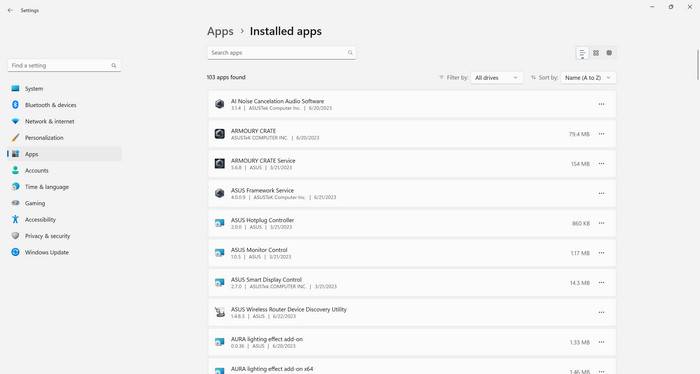Microsoft SkyDrive, now known as OneDrive, is a cloud storage service offered by Microsoft. It allows users to store and sync their files across multiple devices and access them from anywhere with an internet connection. With its seamless integration with Windows operating systems and various features, SkyDrive has become a popular choice for individuals and businesses alike. However, some users may question whether they should uninstall it due to concerns about privacy, security, or simply not needing the service. In this article, we will explore what Microsoft SkyDrive is, its features, benefits, potential drawbacks, and help you make an informed decision about whether to uninstall it or not.

What is Microsoft SkyDrive?
Microsoft SkyDrive, now known as OneDrive, is a cloud storage service that allows users to store, sync, and share files and folders across multiple devices. It was first introduced by Microsoft in 2007 as part of its Windows Live suite of online services. Over the years, it has evolved and improved, offering more storage space, enhanced features, and better integration with Microsoft’s ecosystem.
OneDrive provides users with a certain amount of free storage space, typically 5GB, which can be expanded through paid subscriptions. It supports various file types, including documents, photos, videos, and more. Users can access their files from any device with an internet connection, including Windows and Mac computers, smartphones, and tablets.
Features and Benefits of Microsoft SkyDrive
Microsoft SkyDrive offers several features and benefits that make it a popular choice among users:
- File Syncing: OneDrive automatically syncs files and folders across devices, ensuring that the latest version is always available.
- Collaboration: Users can share files and folders with others, allowing for easy collaboration and real-time editing.
- Version History: OneDrive keeps track of file versions, allowing users to restore previous versions if needed.
- Offline Access: Files stored in OneDrive can be accessed offline, making it convenient for users who frequently travel or have limited internet connectivity.
- Integration with Microsoft Office: OneDrive seamlessly integrates with Microsoft Office applications, such as Word, Excel, and PowerPoint, allowing users to create, edit, and save files directly to the cloud.
- Automatic Backup: OneDrive can automatically back up important files and folders, providing an extra layer of protection against data loss.
Privacy and Security Concerns
While Microsoft SkyDrive offers numerous benefits, some users may have concerns about privacy and security. It is essential to understand the potential risks and take necessary precautions to protect your data:
- Data Privacy: When using cloud storage services like OneDrive, your files are stored on remote servers owned by Microsoft. While Microsoft has implemented security measures to protect user data, it is important to review their privacy policy and terms of service to understand how your data is handled.
- Data Security: OneDrive uses encryption to protect your files during transmission and storage. However, it is crucial to use strong, unique passwords and enable two-factor authentication to enhance the security of your account.
- Third-Party Access: Microsoft may share your data with third-party service providers to deliver and improve their services. It is advisable to review the privacy policies of these providers to ensure your data is handled securely.
- Malware and Phishing: Like any online service, OneDrive is not immune to malware and phishing attacks. It is recommended to regularly scan your devices for malware using reputable antivirus software like Malwarebytes Free and be cautious of suspicious emails or links.
Should I Uninstall Microsoft SkyDrive?
Whether you should uninstall Microsoft SkyDrive depends on your specific needs and concerns. Consider the following factors:
- Storage Needs: If you require additional storage space or prefer an alternative cloud storage service, you may choose to uninstall OneDrive. However, keep in mind that OneDrive offers seamless integration with Windows and Microsoft Office applications, which can be beneficial if you frequently use these tools.
- Privacy and Security: If you have significant concerns about data privacy and security, you may consider uninstalling OneDrive. However, it is important to note that no cloud storage service is entirely risk-free, and it is crucial to take necessary precautions to protect your data regardless of the service you use.
- Alternative Solutions: If you decide to uninstall OneDrive, there are several alternative cloud storage services available, such as Google Drive, Dropbox, and iCloud. Research and compare their features, pricing, and security measures to find the one that best suits your needs.
Conclusion
Microsoft SkyDrive, now known as OneDrive, is a versatile cloud storage service that offers numerous benefits, including file syncing, collaboration, and integration with Microsoft Office. However, users should be aware of potential privacy and security concerns and take necessary precautions to protect their data. Whether to uninstall OneDrive depends on individual needs and concerns, such as storage requirements, privacy preferences, and alternative solutions. By considering these factors and making an informed decision, users can choose the cloud storage service that best meets their needs while ensuring the security and privacy of their data.










